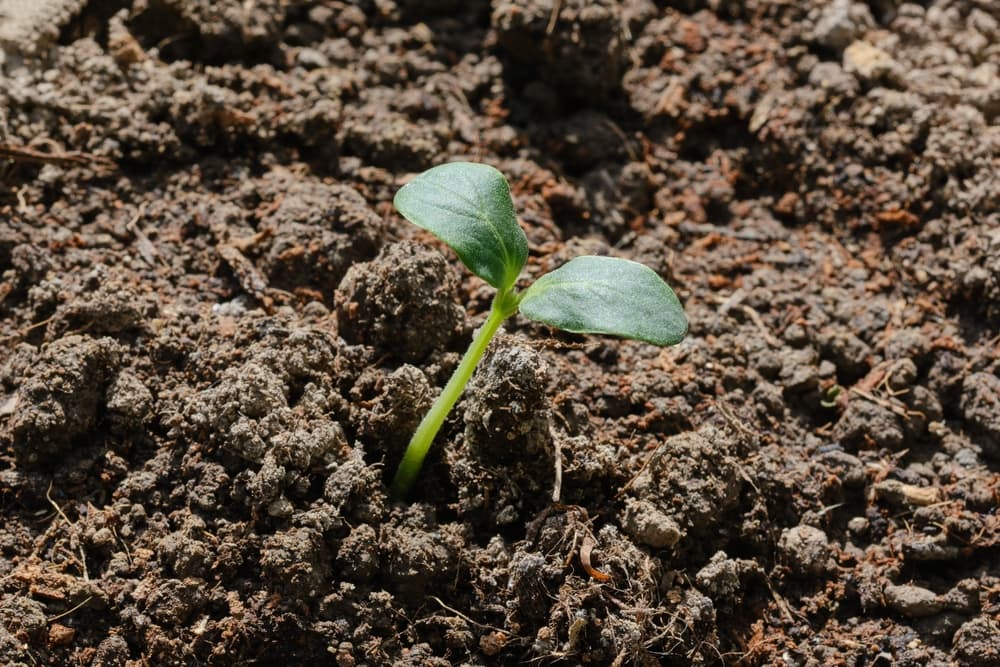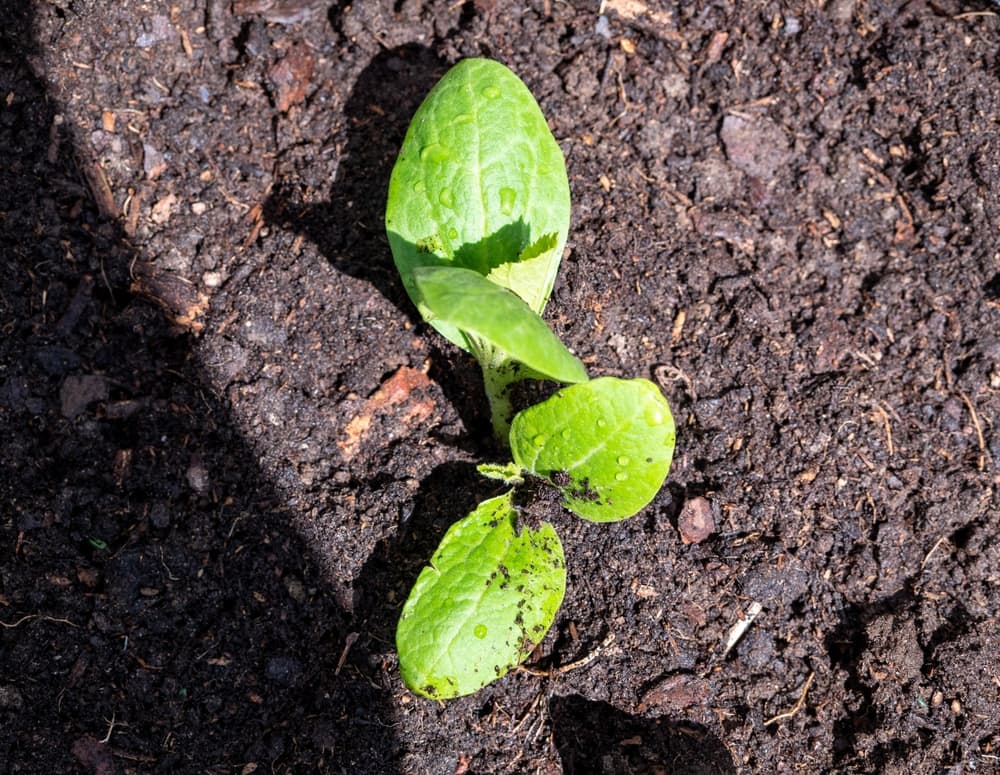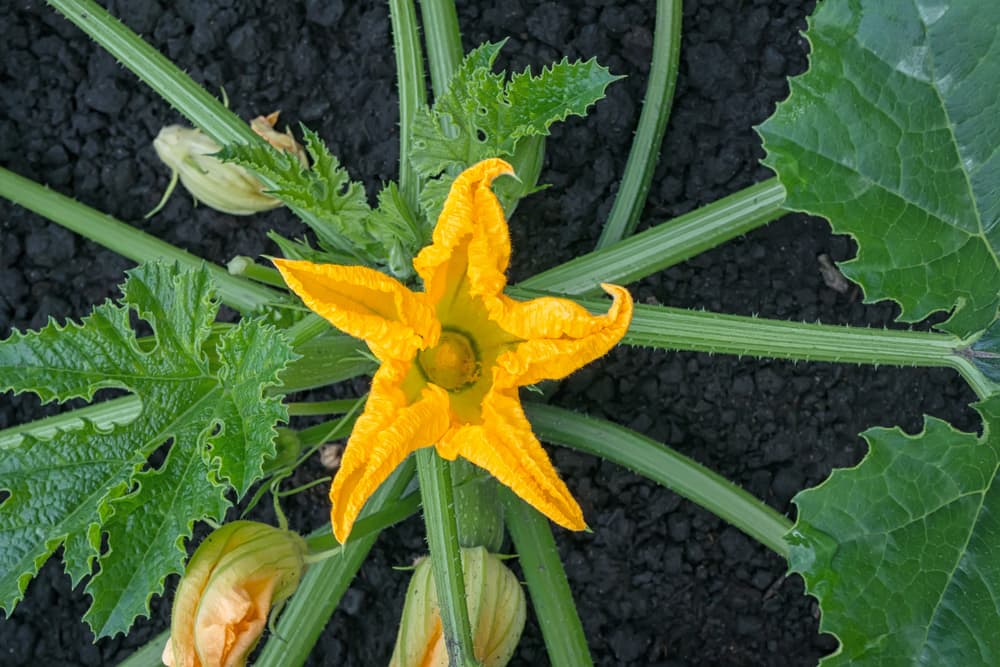Follow These Guidelines When Growing Marrows For A Bumper Harvest

VEGETABLES > MARROW
Chris is a gardening writer and nature enthusiast. He graduated from Oxford Brookes University in 2022 with an MA in Psychology. Chris works with the Leeds Green Action Society, helping their food cooperative by growing various fruit and vegetables on their two allotments in Hyde Park, Leeds.
Reviewed By PETER LICKORISH

Peter is a Horticulture Lecturer and self-employed Horticulturist, with a passion for diverse areas of the industry - from garden design to the science behind plant growth and propagation. He has completed the Royal Horticultural Society’s Master of Horticulture (MHort) Award and lectures on RHS courses at Bedford College.
MARROW GUIDES
Marrows don’t get enough love, really.
These long, cylindrical vegetables grow large and quickly, and go a surprisingly long way in the kitchen.
Their gentle flavour is fairly versatile, lending itself well to roasting, grilling, and various other cooking styles – and to top it off, they’re easy to grow.
Marrows are vegetables closely related to melons, squashes, and pumpkins.
They share a similar texture, if not a little squelchier, and have a gentle flavour that acts as a canvas for other flavours to play upon.
Overview
| Botanical Name | Cucurbita pepo |
| Common Name(s) | Marrows, Courgette, Squash |
| Plant Type | Fruit / Vegetable |
| Native Area | Cultivated |
| Hardiness Rating | H2 |
| Foliage | Annual |
| Flowers | Yellow flowers from which fruit form |
| When To Sow | April (Indoors), May, June |
| Harvesting Months | July, August, September, October |
Sunlight
Preferred
Full Sun
Exposure
Sheltered
Size
Height
0.5 – 1M
Spread
1M (or more, depending on variety)
Bloom Time
July – October
Soil
Preferred
Most Fertile Soil Types
Moisture
Moisture retentive
pH
Any, except strongly alkaline
Marrows are also very similar to courgettes, which makes sense considering that it’s the same plant.
Leave a courgette on the vine for longer and it will keep growing, at some point reaching the right size to be classed as a marrow.

Zucchini is the American word for courgettes and it sits in the Cucurbita genus (Cucurbitaceae family) as a common relative of squash, melons and cucumbers.1Cucurbita pepo (marrow). (2022). CABI Compendium. https://doi.org/10.1079/cabicompendium.17069
The concept of courgettes came later, as gardeners discovered the slight difference in taste between those vegetables left to mature for a longer time on the plant.
How To Grow Marrows
Marrows like full sun, moisture-retentive soil, and shelter from the elements.
Find a spot that fits these criteria, and you’ll be rewarded with a healthy marrow harvest soon enough.
Sowing
It’s easy to grow marrows from seed, and packets should be available from all good garden retailers.
You can sow indoors or outdoors, too, giving you flexibility to choose the method best suited to the space and time available.

To sow marrows outdoors, put seeds about 2.5cm deep into the ground. Aim to sow outdoors in May or June.
We recommend planting 2 or 3 for each plant you want, in holes close together – cover each with plastic, netting, a cloche or similar to keep pests away, and aim to leave them undisturbed for a couple of weeks after germination.
Before the next step, remove all but the strongest seedling.
Your plants should be around 1m apart, and the same is true for transplanted marrows.
To sow marrows indoors, sow individual seeds about 15mm deep in pots at least 8cm deep; lay the seeds on their narrow sides.
You can do this in April as long as temperatures won’t fall below 18°C.
Transplanting
Marrows need special planting pockets prepared before you plant them out.
This involves scooping out about 15 inches squared (width, height, depth) of soil and filling with compost.
Do this a couple of weeks before you plan to plant out your marrow seedlings, to ensure the young plant has all the nutrients it needs as soon as it hits the ground.
Make one planting pocket for each plant.
Alternatively, thoroughly fork the soil in the area where you’re planting and add generous amounts of organic matter, such as home-made compost.

If you sowed your marrow seeds indoors, you’ll need to harden them off before planting out.
For one week leave the plants outdoors during the day and bring indoors overnight.
Then, the next week, leave outdoors in a very sheltered spot for the whole week.
This will get them acclimated to outdoor conditions, without shocking them too much that it’ll cause damage.
If you’re not keen on starting seedlings indoors or outdoors you can buy young marrow plants from garden stores, and these are ready to plant directly into the ground.
Using Growbags / Containers
Marrows also grow well in containers or growbags; just make sure the container is big enough!
Diameter and height should be at least 45cm.
With growbags, don’t plant more than two marrow seedlings in a bag otherwise it’ll get crowded.
Whatever method you choose, aim to plant out your marrows in May or June.
Marrow Plant Care
Watering
These big plants need plenty of water to keep healthy.
Take care to water the soil, not the plant, as overly moist conditions topside can lead to damage.

If possible, dig a small hole next to, or shallow moat around, next to the marrow, taking care not to damage it, and water into that will ensure that the water goes to the roots rather than the parts of the plant just below the soil.
Hydrating roots rather than plant material reduces the risk of rot.
Feeding
Once you spot your first fledgling marrow, feed the plant fortnightly with a liquid fertiliser high in Potassium.
Doing so will encourage more growth, giving you bountiful marrows further down the line.
Plant Support
Not many vegetables need this step, so you may not have seen it before.

We recommend placing each marrow on a flat surface (like a tile) to keep it away from the soil.
This prevents scuffing on the bottom, and should lead to better-looking veggies at harvest time.
Harvesting
When the marrow is at the size you want it, simply pluck it from the stem.
Marrows are often ready to harvest in July and will continue to ripen until October, giving you a long harvest season.
And if you’re not feeling patient, remember you can harvest small marrows as courgettes.
Common Problems
Marrows are prone to a few issues, but knowing what you’re up against is usually enough to prevent catastrophe. Here’s what to keep an eye on.
No Fruit / Stunted Growth
In years with poor weather in the early summer, you may find that your marrows are small or non-existent.
This is caused by lack of adequate pollination and will, when the weather gets better, resolve itself.

Just be patient and prepare for the eventuality of harvesting a little later than initially planned.
Mould
Sometimes you’ll find blankets of grey mould covering parts of your marrow plant.
This is more likely in humid conditions, providing a good reminder of why it’s important to water the roots, rather than the top of the plant.
If you do see mould, remove and destroy the infected areas to prevent the issue from spreading elsewhere on the plant.
“As well as grey mould, powdery mildew, which forms a white coating on plants, can be a common problem with marrows,” says Master Horticulturist Peter Lickorish.
“I find it usually develops on stressed plants, such as those spaced too close together, watered irregularly or overfed.
“Slugs will also devour young plants. I’ve found wool pellets to be a useful defence, which additionally can be used to mulch marrow plants. Mulching is useful for retaining soil moisture.”
Soon you’ll be singing the overdue praises of this currently unsung vegetable, welcoming it into your kitchen and exploring the myriad ways it can be used.
References
- 1Cucurbita pepo (marrow). (2022). CABI Compendium. https://doi.org/10.1079/cabicompendium.17069
